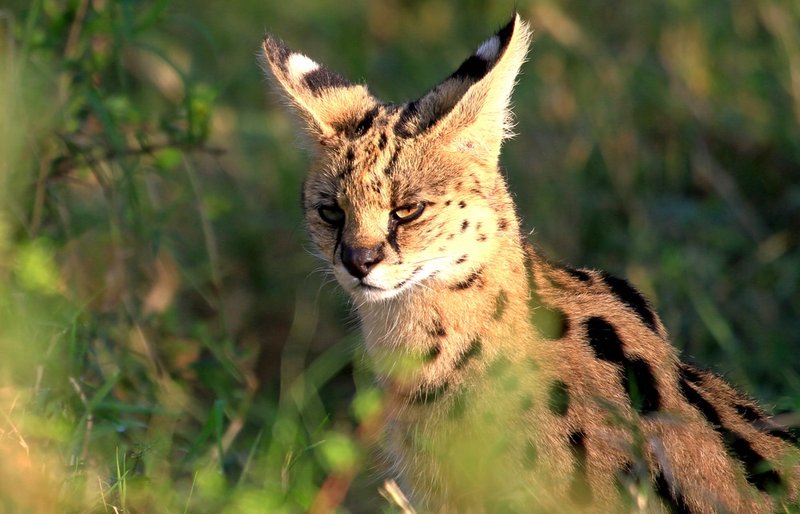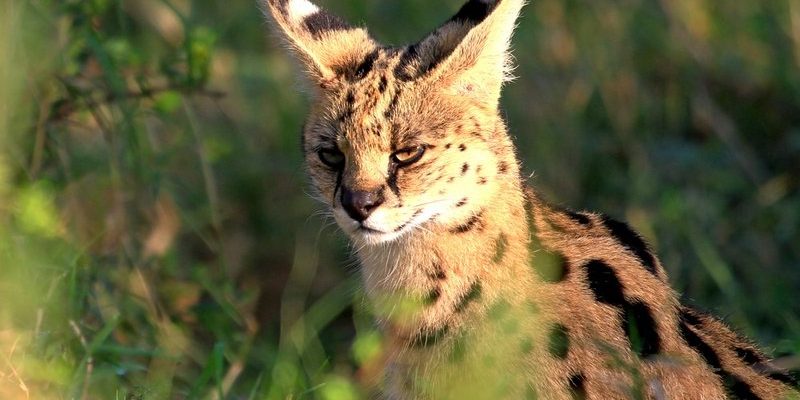
In this article, we’ll dive deep into the evolutionary history of the serval. Think of it as a journey through time, tracing the steps this unique animal has taken to become the predator it is today. We’ll explore its ancestors, its adaptations, and the role it plays in its ecosystem. Whether you’re an animal enthusiast or just curious about wildlife, there’s plenty to learn about this remarkable cat.
The Origins of the Serval
The serval (*Leptailurus serval*) is believed to have originated in Africa, and it shares a common ancestor with other cat species. You might wonder how long ago this happened. Researchers estimate that the serval’s lineage branched off from common ancestors of modern cats around 2 to 3 million years ago. This was during the Pleistocene epoch, a time when many animal species were adapting rapidly to changing climates and environments.
In terms of its evolutionary relatives, the serval is more closely related to the caracal than to larger wild cats like lions or tigers. Both of these species belong to the same subfamily, Felinae. The serval’s close connection to the caracal showcases how different environments can shape species in distinct ways. While caracals are known for their agility and ability to leap high, servals have developed specialized hunting skills that cater to their African grassland habitat.
The physical features of the serval also tell a story of adaptation. With long legs and large ears, this feline is perfectly suited for life in tall grasses. Those ears help it detect prey hidden in the grass, while its long legs enable it to run swiftly and leap high to catch birds in flight.
Physical Adaptations of the Serval
The serval has several adaptations that make it a highly skilled hunter. Let’s break down a few key features:
- Long Legs: Servals have incredibly long legs compared to their body size. This allows them to cover more ground quickly and helps them blend into the tall grass of their savanna habitat.
- Large Ears: Those big ears aren’t just for show! They give the serval excellent hearing and help it locate prey, even when it’s hiding.
- Spotted Coat: The serval’s unique coat pattern of spots and stripes provides camouflage, allowing it to stalk prey without being noticed. This is especially useful in the dappled light of their grassy environment.
- Powerful Paws: Its large paws help the serval walk quietly through the grass, making it a stealthy predator.
These adaptations didn’t happen overnight. Over thousands of years, the serval has honed its body for specific tasks, ensuring its survival in the wild. Think of it like how a well-tuned sports car is designed for speed and agility; the serval is built for the hunt.
Behavioral Traits and Hunting Skills
The serval isn’t just a pretty face; it has some impressive hunting skills too. Known for its incredible ability to leap up to 10 feet high, the serval can catch birds and rodents effortlessly. You might find it fascinating that this cat uses a unique hunting technique called “sit-and-wait.” Instead of chasing down prey, it patiently stalks and then pounces when the moment is right.
Here’s how it works:
1. Observation: The serval will find a good vantage point, often standing still and watching for movement.
2. Stalking: Once it spots potential prey, it sneaks close, using its camouflage to blend into the surroundings.
3. Pouncing: In a burst of energy, it launches into the air to catch its target, using those powerful legs to its advantage.
This method of hunting is effective, allowing the serval to catch rodents, birds, and even small reptiles. Honestly, it’s like watching a skilled athlete in action, utilizing precision and timing to secure a meal.
Habitat and Geographic Distribution
Servals primarily inhabit the open savannas and wetlands of sub-Saharan Africa. They thrive in regions where tall grass and water sources are plentiful, which help them hunt effectively. You might be surprised to know that servals are also quite versatile; they can adapt to various habitats, including forest edges and even scrublands.
Their distribution stretches across several countries, including Kenya, Tanzania, South Africa, and parts of West Africa. However, habitat loss due to agriculture and human encroachment poses significant threats to their populations. It’s crucial to preserve these habitats if we want to see servals continue to thrive.
You can think of the serval’s habitat as its very own buffet. With an abundance of prey like rodents and birds, it’s perfectly set up for survival. But as we encroach on these lands, it’s like closing down the buffet—fewer options mean the serval has to work much harder to find food.
Conservation Status and Threats
Speaking of threats, the serval faces several challenges in the wild. Currently, they are classified as “Least Concern” by the International Union for Conservation of Nature (IUCN), but this doesn’t mean they don’t have worries. Habitat destruction, poaching, and hunting for the pet trade are all risks that the serval must navigate.
One of the biggest threats is habitat loss from agricultural expansion. As farmland spreads, servals lose their homes and hunting grounds. You might wonder, “What can be done?” The answer lies in conservation efforts to protect these habitats and raise awareness about the importance of maintaining biodiversity.
In some areas, organizations are actively working to protect servals and their environment. Creating protected areas and promoting sustainable farming practices can help ensure these beautiful cats continue to roam the grasslands for generations to come.
The Serval in Culture and Popularity
Throughout history, the serval has fascinated humans, appearing in art, folklore, and even as exotic pets. In some African cultures, they are revered for their hunting skills and beauty. They symbolize agility and grace—a testament to their impressive physical abilities.
In recent years, servals have gained popularity in the exotic pet trade, but keeping them as pets is not for everyone. They require vast amounts of space and specific care—something many people might underestimate. Honestly, owning a wild animal can come with serious challenges, and it’s essential to understand the responsibility that comes with it.
Moreover, in the wild, servals play a vital role in maintaining ecological balance. By controlling rodent populations, they help prevent overgrazing and support the health of their habitat. So even if you’re not an animal lover, understanding the serval’s role in the ecosystem is important.
Final Thoughts on the Serval’s Evolution
The evolutionary history of the serval is a fascinating tale of adaptation, survival, and coexistence. From its origins in Africa to its stunning physical features and hunting prowess, this wild cat illustrates the beauty of nature’s design. As we continue to learn about the serval, it’s clear that preserving its habitat is vital for maintaining the biodiversity of our planet.
So, the next time you hear about the serval, remember it’s not just a beautiful creature. Think of it as a symbol of evolution, adaptation, and the delicate balance of nature. By protecting these magnificent animals, we are also safeguarding the rich ecosystems they inhabit. Embracing their story can inspire us to make more conscious choices about our own impact on the environment.

